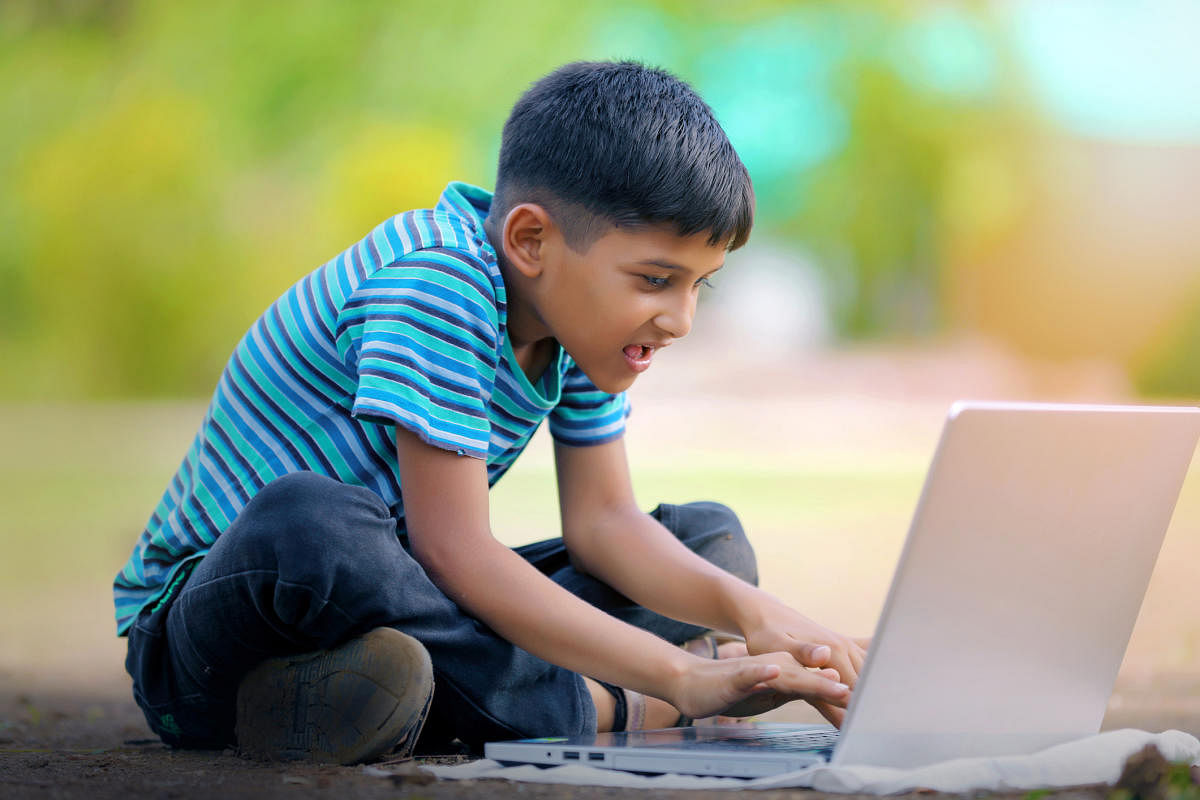
It is 9 o’clock on a warm Monday morning in May. 13-year-old Yuvraj finishes his breakfast, settles in front of his computer and logs on to Google Hangouts. Soon, his entire classroom comes alive – virtually. Under normal circumstances, Yuvraj would have spent the day in his school in the national capital region.
Like in any other part of the country, his school has been closed due to lockdown. But the new academic year started on April 1, online. Classes are being held using digital tools and homework is given out on a WhatsApp group run by the class teacher.
While Yuvraj and other students with access to technology are continuing with their studies, thousands of children across the country are on the roads, along with their parents — who are migrant workers — making their way home, unsure of even their next meal. They may never be able to go to school.
Children in remote areas have a different set of problems. In the tribal district of Nandurbar in Maharashtra, 10-year-old Kiran spends his day wandering in the forest or playing with his friends. His Zilla Parishad school is closed and the concept of e-learning is alien to him. His parents are farm labourers and cannot afford a basic model of mobile phone, let alone a smartphone.
Though schools in Maharashtra would have remained closed for summer vacations under normal circumstances, the ZP school teacher, Pravin has received instructions from the government to keep her students engaged through WhatsApp groups. The lack of internet access make classes through Zoom or Microsoft Teams impractical.
“I have a WhatsApp group of 16 students and do send them some homework. But, I consider myself fortunate if I receive responses from even two of them,” Pravin told DH over the phone.
In urban areas too, access to internet-enabled services is not easy. In Delhi, father of a Class 10 student, who did not want to be named, expressed his inability to spare his smartphone – the only one in the family – for his son’s online classes. He has conveyed to the school that his son can access recorded sessions of the classes only on weekends and be permitted to do so.
These situations lay bare the stark realities of developed India and the largely rural Bharat, as the country tries to cope with the changes in the education sector caused by COVID-19 and the lockdown that followed.
This also explains the findings of a National Sample Survey Organisation report, that found that less than 15% of rural Indian households have access to the internet.
The COVID-19 outbreak has pushed education into uncharted territory of e-learning for all. Almost overnight, classes over Zoom, WhatsApp, Skype, Microsoft Teams, Google Hangouts and YouTube have become the norm.
“The use of technology in teaching has been a new and exciting experience, but I do miss being in a classroom. The lack of instant feedback from students makes it difficult to ascertain whether the students have grasped what is being taught to them,” Kavita Singh, a school teacher told DH.
On the other hand, many students don’t find the classes engaging. “I do not like the way online classes are conducted. I am looking forward to my school reopening,” said Sudhandhiralakshmi, a Class 10 student in Chennai.
A Class 12 student in Bengaluru points to the limited scope for interaction in online classes which restricts education outcomes.
It’s not just students who are hassled. Recently DH carried a report of teachers refusing to conduct classes due to “bullying” by students’ parents. Several teachers, who switched over to the new platform just a few days ago, are already overwhelmed by the digital experience.
Recently, Karnataka Primary & Secondary Education Minister S Suresh Kumar warned the preschools for holding online classes for students in a tweet.
“Wherever facilities are available and wherever it is feasible, this mode is important and it should be used. But, this cannot be a uniform policy as it depends on the availability of the infrastructure which is not there in bulk of the institutions in rural India,” Sukhdeo Thorat, former chairman of the University Grants Commission told DH.
Prof K R Venugopal, the Vice Chancellor of Bangalore University echoes this view. “Online education is the future. Connectivity is a challenge. We need to make e-learning hybrid by combining both off line and online education,” he says
While access to the internet is an issue for a large section of students, technology has other downsides too. A section of parents have complained to schools of the excess screen-time that students are subjected to during online classes.
“It is stressful at times to read the small print of the presentations that are part of online classes, particularly on a smartphone,” says Aseem, a Class 10 student in the national capital region.
Government measures
The Ministry of Human Resource Development (MHRD) has offered apps such as ePathshala, National Repository of Open Educational Resources (NROER), Digital Infrastructure for Knowledge Sharing (DIKSHA), Study Webs of Active Learning for Young Active Minds (SWAYAM), Massive Open Online Course (MOOC) and SWAYAM PRABHA, a group of 32 DTH channels broadcasting high-quality educational content to help students get access to online education.
In contrast to poor penetration of the internet, television covers a vast swathe of the country. According to a survey by the Broadcast Audience Research Council (BARC), out of the 298 million households in the country, 197 million households have access to television sets. India has been a pioneer in imparting education through television, but such programmes have been targeted at a motivated group of students who have been pursuing studies through distance education universities.
Another announcement against the backdrop of COVID-19 has been the launch of 12 dedicated TV channels. “Most of the schools, even in remote areas, have access to television sets. A judicious use of time could help space out the lectures for different classes and give all students equal access,” Pravin, the Zilla Parishad school teacher said.
For the channels, the challenge is generating the content that would keep students engaged. Here too, the HRD Ministry has come up with the VidyaDaan 2.0 initiative to encourage academicians to contribute engaging e-learning content aligned with the curriculum.
Hurdles abound
There are challenges with reliance on digital modes of teaching which can be used for dissemination of content but do not promote teacher-student or student-student interaction. The government announcements are silent on building teachers’ capacities to adapt to the digital mode of imparting education.
“While the government focuses on e-learning, the reality is that only 2.7% of the poorest households have access to a computer. The government needs to look at approaches that are more inclusive such as provision of print material and teaching offline in small groups, which is being explored in Nagaland,” Anjela Taneja, Lead Specialist, Inequality and Essential Services, Oxfam India said.
A World Bank report says that for the duration of the COVID-19 crisis, 85% students worldwide have been out of school.
“Student dropout could rise, with many students leaving schools forever. Widespread unemployment and income loss will severely test households’ ability to pay to keep students in school,” the report ‘The COVID-19 Pandemic: Shock to Education and Policy Responses’ says.
It is not only school closures that will worsen education outcomes, but also the impending economic crisis, the effects of which can already be seen. The International Monetary Fund has projected that the global economy will shrink 3% in 2020, a much bigger drop than during the global financial crisis of 2008–09.
The recent report further noted that budget constraints may force the poorest households to keep their children out of school even when they reopen.
Another significant section of the students who have missed out on education during COVID-19 times are persons with disabilities and those who with learning disorders. As many as 74,435 students with disabilities enrolled in universities across the country have no access to education for want of guidelines from the government.
Students with visual challenges are not able to access the study material because the assignments are sent as scanned images, Sameer Rishad, convenor of the Javed Abidi Foundation said.
Deaf students do not have access to online classes as there is no sign language interpreter during video calls, Rishad said, adding that the students are not even provided transcripts of the lectures.
While efforts are on to embrace online mode of learning, the digital divide deprives a large population of children from having access to education not only in the rural areas, but also in cities.
(With inputs from Mrityunjay Bose, E T B Sivapriyan and Rashmi Belur)
